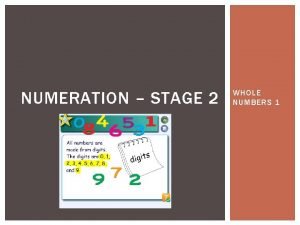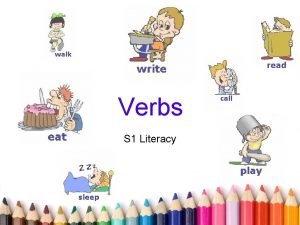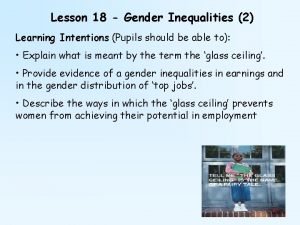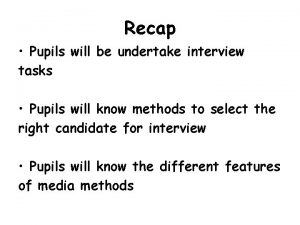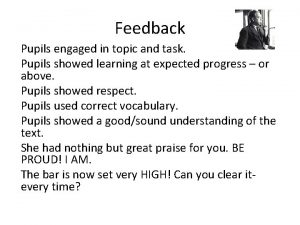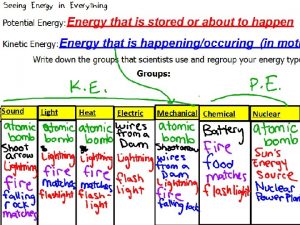National 5 Physical Education Learning Intentions Pupils will


















- Slides: 18

National 5 Physical Education

Learning Intentions • Pupils will gain a better understanding of the Social Factors • Pupils will understand how social factors can impact performance, in both a positive and negative way.

Social Factors include: • • • Communication Team Dynamics Etiquette Cooperation Fair play

Communication • The ability to give others information through talking, signals or action

Communication Example https: //youtu. be/mowia. RXS-gc

Communication Example (Positive): • Factor: In volleyball, communication can have a positive impact on a teams performance • Context: when your team is receiving serve someone calls their name to tell others they will go for the ball. This results in less confusion and a more accurate first touch to the setter. • Impact: This means that my team will be able to build a stronger 3 touch attack and will have a better chance of winning the point.

Communication example (negative): • Factor: In netball, communication had a negative impact on my performance • Context: At centre pass, the WA was supposed to receive the pass, but was being heavily marked. The WD was free, but did not shout for the ball. • Impact: This meant that the centre did not know the WD was free and ended up making a poor pass to the WA who was being marked an the ball was intercepted by the opposing team, giving them a chance to attack.

Communication • Write up your positive or negative examples for communication.

Team Dynamics • Is the interaction of performers within a team or group. It is mainly to do with making the team more effective than the sum of its parts

Team Dynamics – Negative Example • Factor: In rugby, a factor which impacted my performance negatively was team dynamics • Context: Within our team, 3 players didn’t get on well together, refused to speak to each other and often argued. • Impact: This meant that players wouldn’t listen to instructions or feedback from those players and were not be able to carry out tactics effectively.

Team Dynamics (positive impact): • Factor: In volleyball, good dynamics within the team has a positive impact on performance. • Context: Players have a clear understanding of each other’s roles and responsibilities and have a mutual respect for each other which allows them to work together • Impact: This increased clarity and awareness enables them to execute strategies such as a three touch attack or defending a spike.

Team Dynamics • Write up your positive and negative examples for team dynamics

Etiquette • The way performers are meant to behave in an activity. It is the “unwritten rules” of an activity.

Etiquette Example • For example – shaking hands at the end of a game, kicking the ball out if a player is injured in football or handing the shuttle back to your opponent when they win a point in badminton. • Helps keep emotions under control. • Less chance of being penalised by the referee/umpire. • Greater respect between players, teams and coaches

Etiquette (Positive example) • Factor: In rugby, etiquette had a positive impact on a teams performance • Context: At the end of the rugby match the players who had been very competitive and physical in the match made sure they shook every opponents’ hand congratulated them. The teams applauded each other off the pitch as well. • Impact: As a result both teams and their fans are likely to treat each other with respect in future matches.

Etiquette Example – Negative Impact • Factor: In badminton, etiquette can have a negative impact on performance • Context: A badminton player gets very annoyed with their performance and begins shouting and complaining about a lot of decisions. The umpire warns the player about the behaviour on court. A couple of points later the player bangs their racket into the ground in frustration at losing a point. • Impact: The umpire awards the opponent the next point due to a court violation, putting the player further behind.

Etiquette • Write up your positive and negative examples for etiquette

Homework! • Homework is due on FRIDAY!!! • This is to allow you to write up the SOCIAL section NEXT THURSDAY • THIS THURSDAY you will write up the EMOTIONAL factors.
 Poetry learning intentions
Poetry learning intentions How to write learning intentions
How to write learning intentions Learning intention examples
Learning intention examples Learning intentions and success criteria examples
Learning intentions and success criteria examples Nat 5 persuasive essay
Nat 5 persuasive essay Write a number in expanded form. 637
Write a number in expanded form. 637 Poetry learning intentions
Poetry learning intentions Fractions learning intentions
Fractions learning intentions Half turn symmetry
Half turn symmetry Verb viper
Verb viper Poetry learning intentions
Poetry learning intentions Learning intentions and success criteria for mathematics
Learning intentions and success criteria for mathematics Poetry learning intentions
Poetry learning intentions Poem on peacock
Poem on peacock Creative writing learning intentions
Creative writing learning intentions Acrostic poem for success
Acrostic poem for success The crucible character map
The crucible character map The meaning of advent worksheet
The meaning of advent worksheet Shared clarity about learning intentions
Shared clarity about learning intentions





